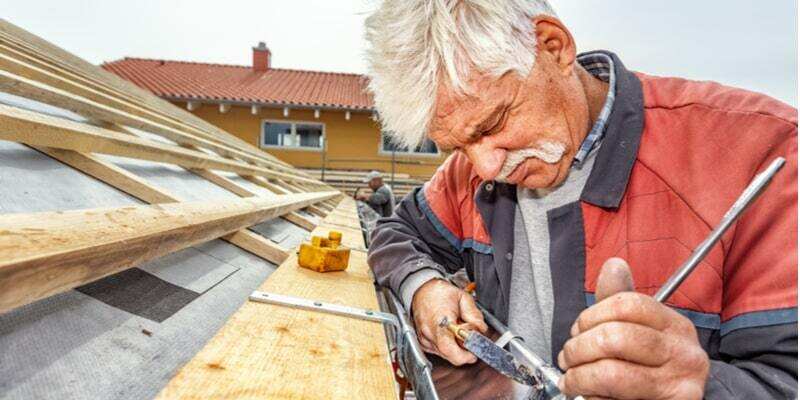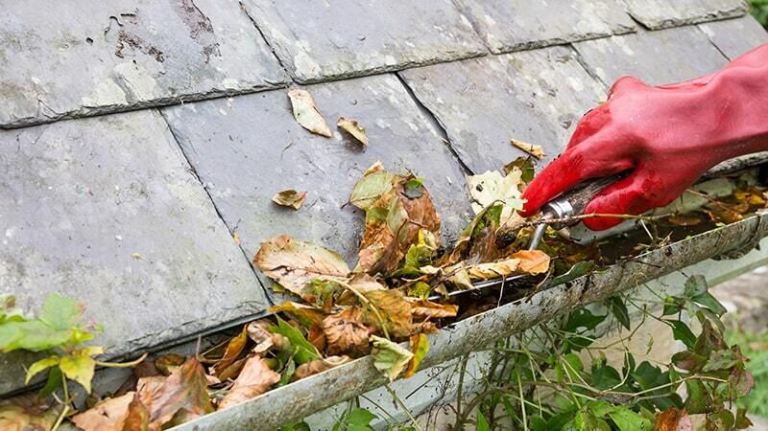Gutters were created to carry rainwater from your roof into downspouts and safely to the ground to prevent water-related damage to your home. We are often asked the question; which gutter material is best to use for a home? At various times and for various purposes, gutters have been made from a number of different materials. In this article, we provide a breakdown of the most common gutter materials and gutter types.
Aluminum Gutters
The most popular residential gutter type is made of seamless aluminum, known as formed K-style gutters. Aluminum gutters are strong and lightweight. Seamless aluminum gutters come in many colors and are formed into the shape and length you need at your home. For example, Leafguard gutters are made from aluminum 20% thicker than industry standard to ensure protection against the harshest of weather conditions.
Wood Gutters
Wood gutters are rare, except for restoration work. They’re also expensive, starting at about $15 per linear foot installed and, depending on the wood species used, they can be very expensive – running as high as $25 per linear foot. The original wood gutters were made from old-growth cedar, a product that is rarely available today. Its substitution – new growth cedar or hemlock gutters have proven inadequate.
Copper Gutters
Copper is usually reserved for classic restorations. It’s handsome, durable, never rusts, and never needs painting. They are expensive, but add value to your home and require less maintenance than aluminum or other materials. However, Copper gutters will oxidize and turn green over time unless they are treated. There are several sealants available that can be applied to keep copper gutters looking golden and shiny.
Steel Gutters
Steel gutters can stand up to ladders and fallen branches better than aluminum. But even thick galvanized steel eventually rusts and needs to be painted. Stainless-steel gutters are strong and rust-free and maintain their high sheen for years. But, like copper, stainless steel is expensive.
Vinyl Gutters
Vinyl is a commonly used material, often sold in hardware stores in six and 12-foot sections to do-it-yourselfers. Heavy amounts of rain can cause the material to bend and bow. Even a ladder put up against them can create serious damage. In regions with hot sunny temperatures, vinyl gutters will crack under the harsh conditions and break apart. They do not rust or corrode and do retain their color or can be painted if desired.
Half Round and Quarter Round Gutters
Half-round and quarter round style gutters with round downspouts are only found on 19th Century era houses. They enable water to flow very effectively but they must be sized one inch larger than K styles to handle the same capacity. Consequently, 6-inch half-round gutters are equivalent to 5-inch K-style.
Fascia Gutters
A fascia gutter is a rainwater system that is fixed to a fascia board. It is often a custom made rainwater gutter that is fixed to the ends of the rafters and performs the function of a fascia board. It is commonly found in the Western part of the United States.
Integral Gutters
Integral gutters were a popular gutter style in the 1960’s. The end of the rafters and fascia on a sloped roof forms this system. The gutter is lined with built-up roofing material and is able to hold a great deal more water than most of the other types of gutters. The disadvantage of this gutter style is the potential for leaks, which can result in damage to the framing, fascia, soffit and sheathing of the roof. The lining must be replaced or repaired every five to ten years.
Learn how Leafguard gutters compares to other gutter materials and types.
In Summary:
- Aluminum is the most effective and widely used gutter material for modern homes.
- Copper and steel offer longevity and aesthetic appeal but at a higher cost.
- Vinyl and wood gutters are best for specific climates or historic restorations.
- Leafguard’s thicker aluminum gutters combine durability, performance, and low maintenance — providing a long-term solution for homeowners.


